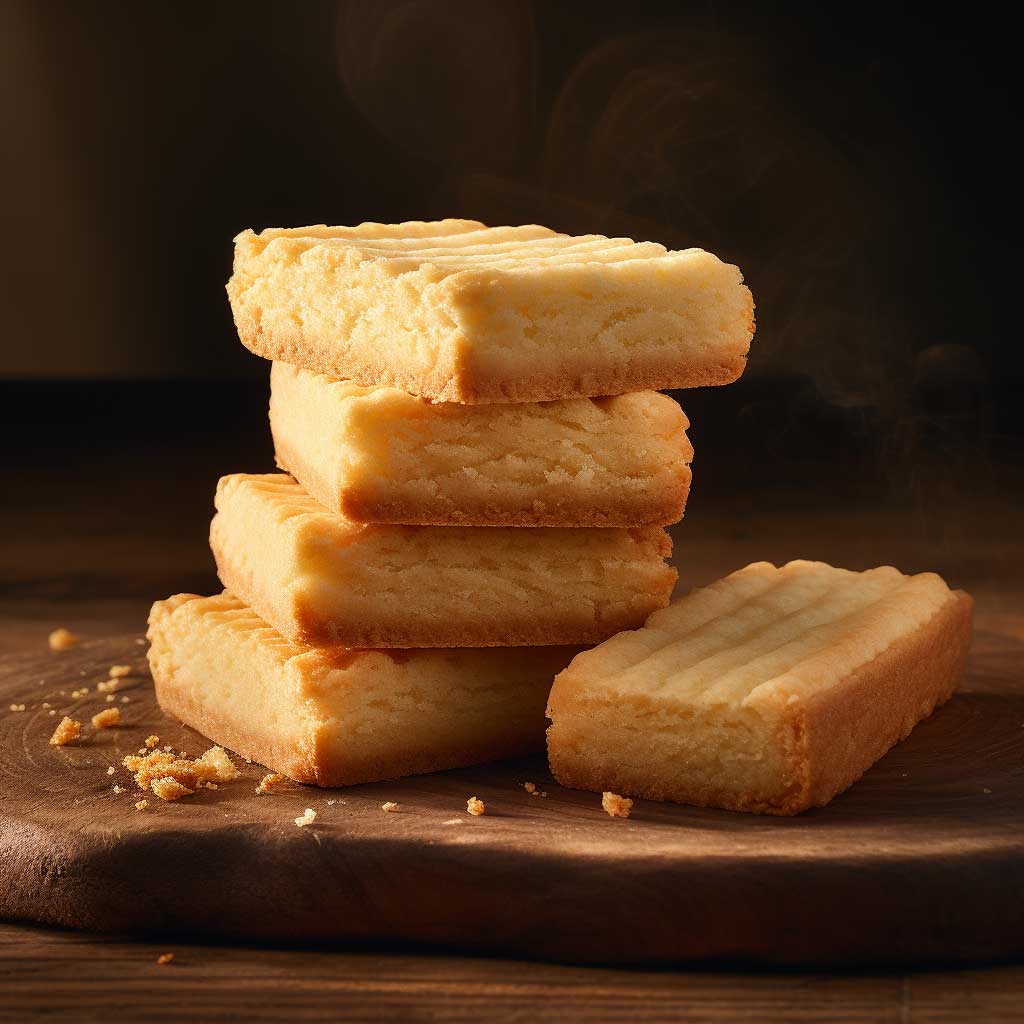
In the illustrious realm of British biscuits, there exists a golden-hued wonder that transcends the ordinary – shortbread. With a heritage as rich as its buttery texture, shortbread stands as a symbol of refined indulgence, a teatime treasure that has graced British households for centuries. Join me on a delightful journey through the crumbly, melt-in-your-mouth world of shortbread, exploring its history, cultural significance, and, of course, indulging in the creation of this timeless treat with a quintessentially British recipe.
To understand the allure of shortbread is to delve into the annals of Scottish culinary history. Originating from medieval “biscuit bread,” a twice-baked, hard bread roll enjoyed as a delicacy in medieval Scotland, shortbread underwent a transformation that would elevate it to the status of a luxury treat. The magic happened when bakers discovered that adding butter, an expensive ingredient, resulted in a crumbly, tender texture – thus, shortbread as we know it was born.
With its roots firmly embedded in Scotland, shortbread became associated with special occasions and celebrations. In the 16th century, Mary, Queen of Scots, is said to have been quite enamored with “Petticoat Tails,” a form of shortbread named after the circular shape resembling the layers of a petticoat. The treat’s popularity continued to grow, and by the 19th century, shortbread had become a staple of Scottish hospitality, often presented to guests as a symbol of warmth and welcome.
Beyond its historical journey, shortbread has woven itself into the fabric of British culture. A mainstay during teatime, a comforting treat for festive occasions, and a gift that conveys both elegance and thoughtfulness, shortbread has become synonymous with refined indulgence. The crumbly texture, buttery flavor, and subtle sweetness of shortbread make it a versatile canvas for creative adaptations, ensuring its enduring popularity across generations.
While traditional shortbread remains a timeless classic, the beauty of this treat lies in its adaptability. From classic variations to contemporary twists, shortbread has inspired a myriad of delightful renditions. Whether infused with citrus zest, adorned with nuts, or drizzled with chocolate, each variation retains the essence of crumbly, buttery bliss while offering a unique sensory experience.
Before we embark on the delectable journey of shortbread creation, let’s gather the ingredients for the classic version:
Now, with a batch of freshly baked shortbread in hand, let’s delve into the delightful world of this classic British treat.
As you bite into a piece of freshly baked shortbread, a symphony of textures and flavors unfolds. The exterior is delicately crumbly, giving way to a melt-in-your-mouth tenderness that is the hallmark of perfect shortbread. The buttery richness is balanced by a subtle sweetness, creating a sensory experience that is both indulgent and comforting.


Immerse yourself in a fusion of flavors and entertainment as we intertwine the realms of food and living.